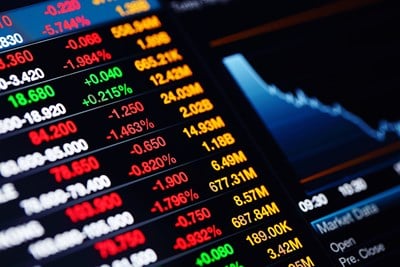To the uninformed person, day trading is a mix between investing and gambling. There’s a lot of risk, and if you’re good enough, you can pocket some nice profits. But before you make the jump and start day trading, you should know what day trading is really about. Risk is the only thing day trading, investing, and gambling have in common.
What is day trading?
First off, day trading is different than investing. When you invest, you hold your securities for an extended period of time. Investors buy shares and sit on them for extended periods of time; the payoff comes after patience, whether you wait for months or over a year.
Day trading is exactly what it sounds like: all the action happens within a single day. Day traders profit by quickly buying and selling stocks and other financial properties, such as currencies. Similar to investors, these traders aim to buy securities at a low price and sell when they’ve increased in profit. A day in the life of a daily trader involves trading anywhere from 30 or more securities a day. The greatest difference between investing and day trading is the timing. Imagine doing all the work of an investor in less than 24 hours!
How does day trading work?
Here is the basic tenet of day trading: begin and end the day without any stocks. The day trader uses risk capital to buy and sell financial properties throughout the course of the day. When it comes down to the actual method used by day traders, there are several techniques. These four are among the most popular:
- Scalping: Experienced traders follow the time and sales to carry out trades on the fly. These trades take only seconds, and although they don’t generate much profit, they can accumulate over time.
- Daily Pivots: This method is the easiest to understand. Traders buy stocks at their low of the day, and then sell when they’ve reached their high point.
- Arbitrage: Are you keeping a good eye on the markets? If you see a security has a higher value in high-value market and a lower value in yours, sell as much of it as you can. Then buy the low-priced product in the other market. Eventually, the price discrepancy will be fixed, and you can sell the low-priced asset for higher.
- News Playing: Day traders plug into various news outlets; a single story can strongly impact the price of a stock. Traders sell stock as soon as possible after bad news breaks; alternatively, they jump at buying stock right as good news is announced.
Day trading is risky business.
The most successful day traders are supported by big financial institutions. Trading isn’t a part-time job or hobby; to become successful, you must dedicate yourself to day trading to get the best results. You need capital—and lots of it—to get started, as new traders typically lose more than they gain. It takes a lot of practice and even more profit to break into day trading.



